Gloxinia is a very elegant and delicate plant. It fits perfectly into any interior. How to care for this gentle creation at home? What problems and diseases do this plant have? How to transplant and propagate it properly? You will learn the answers to these and other questions in this article.
Content
What does gloxinia look like?
The leaves of this houseplant are quite large, often have a rounded shape or jagged edges. The surface of the leaf resembles a violet leaf: velvet and soft. Flowers of various colors have the shape of a bell, only much more. The second name is Sinningia.
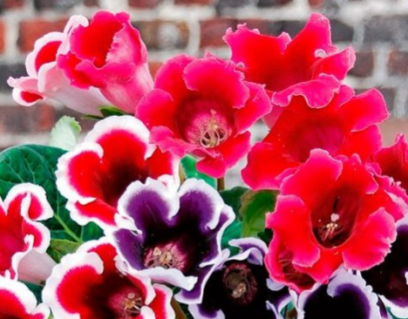
This Brazilian beauty got her first name from the ship's doctor, who first met this miracle and described it. And the second - in honor of the breeder who bred a large number of beautiful gloxinia hybrids.
Gloxinia Care at Home
For the normal growth and development of this indoor plant, special care is necessary.
Lighting
Primary role ingloxinia care lighting plays. For this plant, the length of daylight plays an important role, since this type of flower is quite photophilous. The best option is diffused sunlight. It is permissible to be in partial shade, but then gloxinia will stretch.
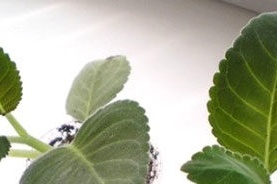
If the leaves of the outlet are horizontal and have a dark green color, then, accordingly, the light is selected correctly. And if the gloxinia leaves are raised up, then this means that she has a lack of lighting.
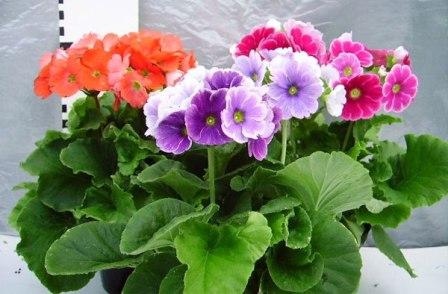 You may be interested in:
You may be interested in:Excessive lighting also negatively affects the plant. With a duration of more than 14 hours in the summer daylight hours, the leaves of the flower begin to bend and “hug” the edges of the pot, the peduncles are shortened and the flowering time decreases. If the leaves turn yellow, and the edges curl, then you need to shadow the pet.
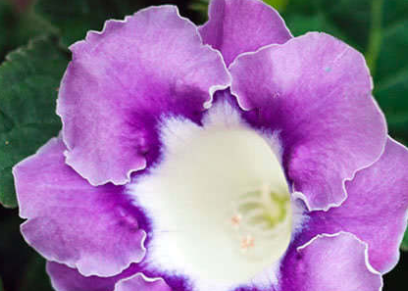
Temperature mode
During dormancy, that is, in winter, gloxinia is enough 12 ° C - 15 ° C. And in the warm season, the temperature should not exceed 21 ° C.
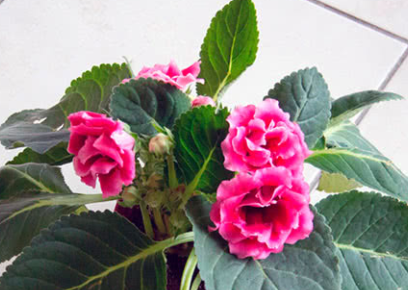
Air humidity
Gloxinia is quite hygrophilous and it is worth creating the most comfortable conditions for growth and flowering. It is worth noting that spraying this type is quite fatal. Water cannot fall on leaves and flowers, as decay can occur.
To increase humidity, you can put a jar filled with water near the syningia. Also pour expanded clay or pebbles into the pallet. But, in no case can it be that the water touches the bottom of the pot, this will contribute to decay of the roots.
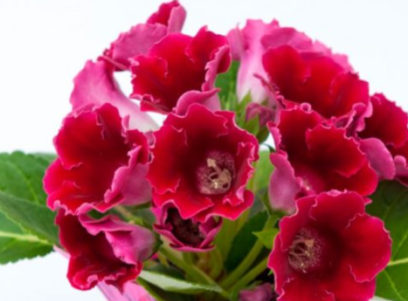
How to water
It is especially serious to approach the watering of gloxinia, due to the fact that it is important enough for it. Do not water if the topsoil is still wet. Watering should be done at the edge of the container in which the plant is located.

When the indoor beauty ceases to bloom, watering should be reduced to a minimum, especially in the autumn, since at this moment the plant is preparing for a period of rest. Features of watering gloxinia
- overflows are very harmful for syningia, so it is worth pouring excess water from the pan on time;
- water for irrigation should be only at room temperature;
- taking into account that warm water is quickly absorbed, this is a prevention of plant decay.
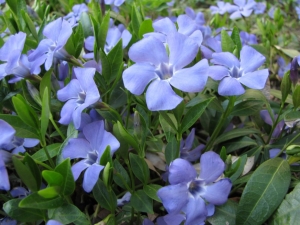 You may be interested in:
You may be interested in:The soil
Gloxinia is quite capricious in choosing the soil, and if you can’t make the right substrate yourself, you need to purchase the right soil in a flower shop. Suitable substrate for violets and begonias.
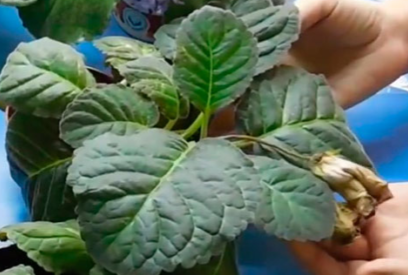
To prepare the soil at home, the following ingredients are needed:
- sheet earth;
- river sand;
- peat.
Observe the following proportions: 2: 1: 1. You can also add moss or perlite, they are excellent baking powder.
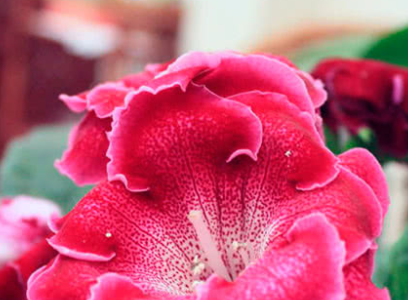
The soil should contain substances that are well absorbed by the plant. Also, the soil should not retain water for a long time after irrigation. And the main point is that the land before planting should be sterilized.
Top dressing
Gloxinia top dressing should be used in April to August. Fertilize every 8-10 days. Fertilizers are ideal for flowering plants, but use 2 times less than what is written on the package. It is worth remembering that when the period of dormancy begins at synningia, then it is not worth feeding it.
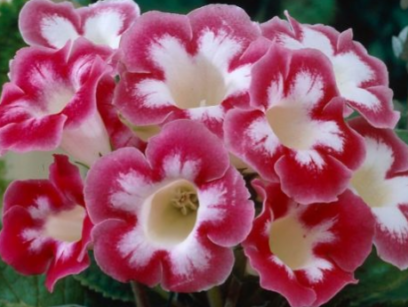
It is useful to alternate mineral and organic nutrition. You can buy ready-made or cook at home. To do this, you need a mullein concentrate, which should be dissolved in water in a proportion of 1:12.
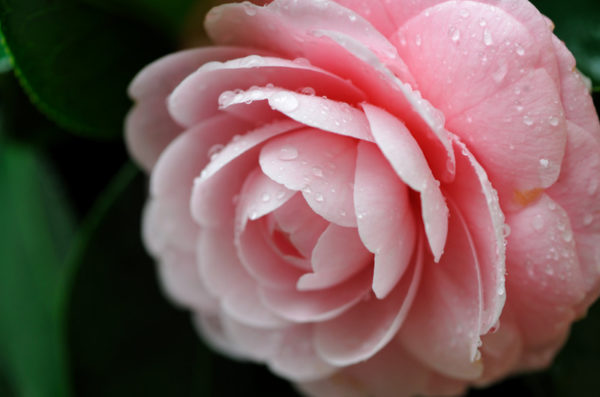 You may be interested in:
You may be interested in:Transfer
If buds have formed on the tubers, then this means that the plant is time to transplant. Important! When replanting, use only fresh soil.
Thoroughly rinse the roots from the ground before planting, then hold them in a weak solution of manganese. Damaged places should be removed and treated with crushed coal. Pre-moisten the soil and only after that plant the plant to a depth of 70%. After planting, transfer the pot to a sunny place.
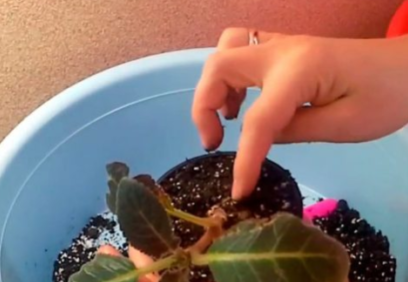
It should be noted that after transplanting gloxinia, watering should be started carefully enough, avoiding overflow of the plant. Then gradually increase. The capacity in which the syningia will be planted should be slightly higher and wider than the previous one.
Care after flowering
Basically, gloxinia itself goes into sleep, but some species should be put into a state of rest. What do I need to do:
- from the beginning of autumn to reduce watering, water the plant much less frequently and more moderately;
- reduce the amount of light;
- stop fertilizing;
- gradually lower the temperature to 15-18 ° C.
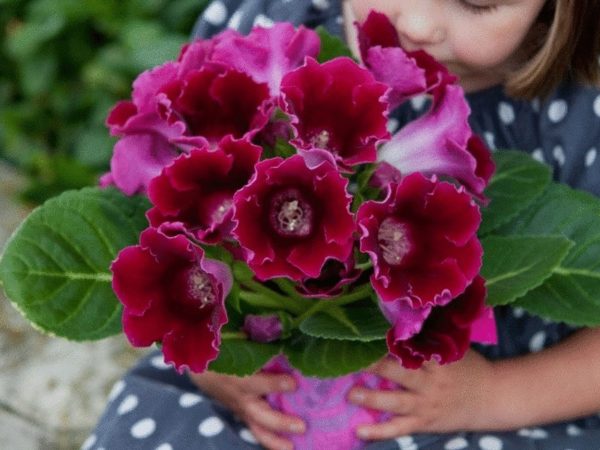
After flowering: late November - early December, it is worth stopping watering and put gloxinia in a dark and dry place with good ventilation and a temperature of at least 12 ° C.
When the top of the plant dies, it must be removed, leaving 1.5 cm on the tuber. At this point, a dormant period begins. To clear tubers from the earth and to process fungicide. Storage takes place in boxes, sprinkling rhizomes with perlite or vermiculite.
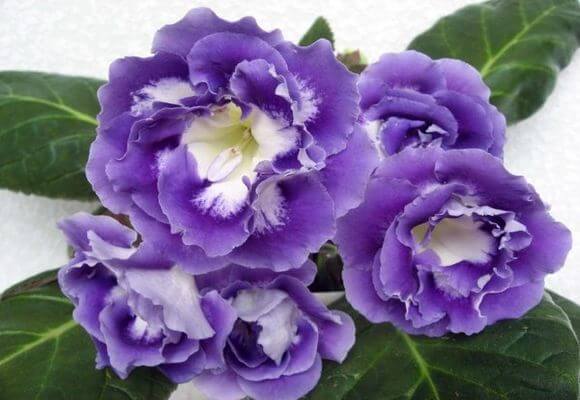
Once every 2 weeks, moisten the tubers with a solution of fungicide and water from the spray gun. The substrate is moistened by about one third, thereby preventing it from drying out. The rest period lasts from 1 to 3 months.
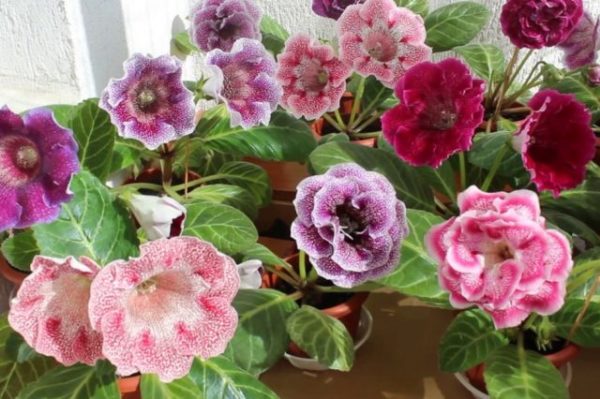
Winter care
Particular attention should be paid to young gloxinia in the winter. Given that the tuber of a young plant can dry during storage, it is not sent to hibernation. But the lack of light can negatively affect the flower, for this it is necessary to create artificial lighting. Synningia should be illuminated for at least 12 hours a day.
It is also worth observing the temperature regime. The temperature in the room should not exceed 20 ° C. In that case, if the apartment is hot enough, then all the forces will go to the growth of the stem, and not to the mass of the tuber.
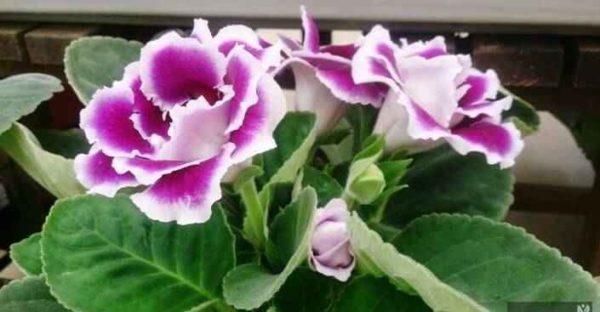
Watering is much less common than in summer and do not forget about waterlogging of the soil.
If gloxinia bloomed once, then she also needs special care. The plant should be rearranged on the north window and occasionally watered, so that the Brazilian beauty was in a drowsy state. At the end of winter, when daylight becomes longer, put the flower in a sunny place.
Diseases and Pests
Late blight - a fungal disease that occurs when water stagnates in a pan, too dense soil, excessive humidity, and also at low temperature during the growing season.
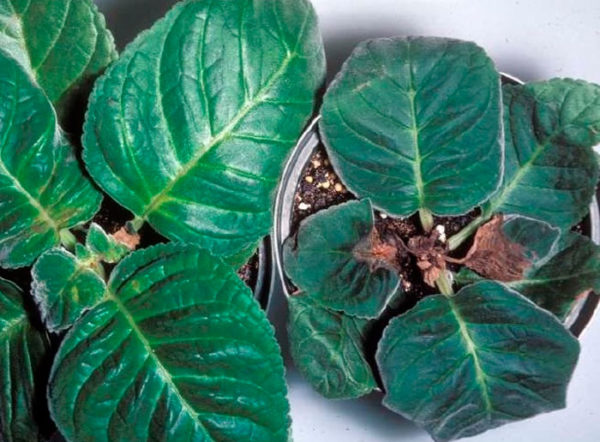
Fusarium - also a fungal disease that occurs with excess moisture, lack of water and fertilizers. Leaves wither, twist, acquiring a brown color. It is necessary to treat the plant with fungicides and transplant into fresh soil.
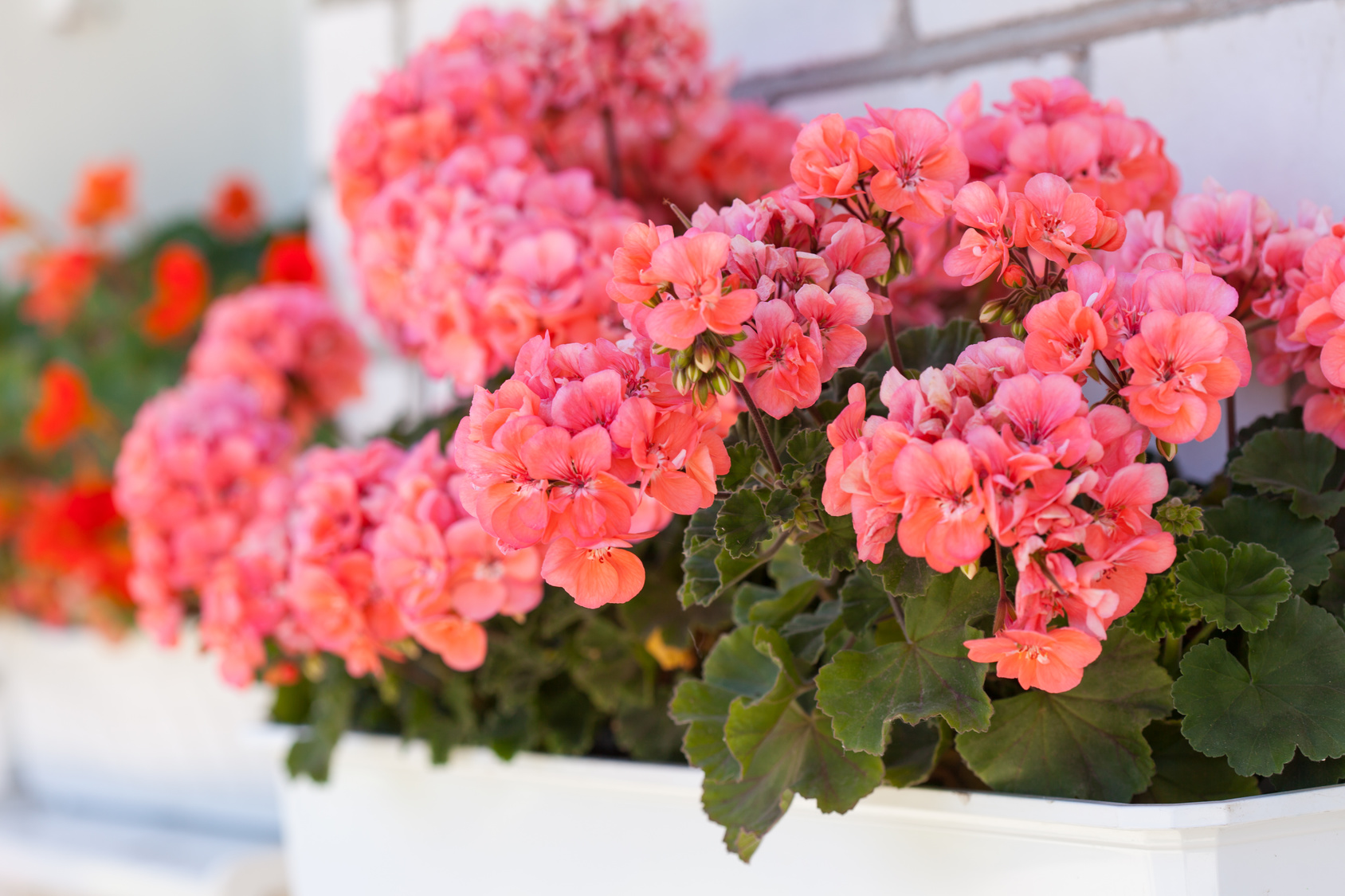 You may be interested in:
You may be interested in:Gray rot. Its development can provoke waterlogging of the earth. The stem begins to blacken, and a gray coating and brown spots appear on the flowers and leaves. It is advisable to remove the affected areas of the tuber, and treat the rest with fungicides and transplant into new soil.
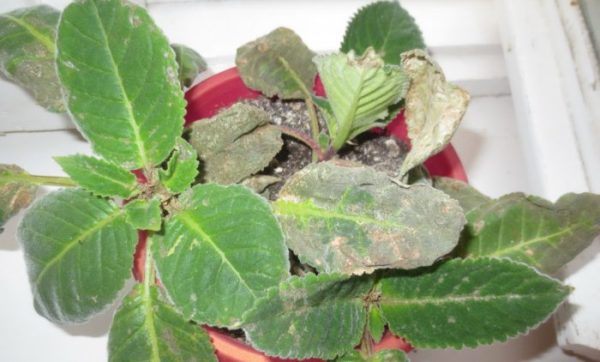
Quite rarely, but it happens that gloxinia is attacked by such pests as:
- spider mite appears on synningia if the room is sufficiently dry air and lack of moisture. For prevention, increase the humidity in the room, and isolate the infected plant from the rest. The treatment is carried out with acaricides, and the soil should be treated with drugs such as Temik or Aldicarb.
- cyclamen tick. If you notice deformed thickened leaves, covered with a layer of dust, it was this pest that visited your plant. For treatment, it is recommended to use acaricides from ticks.
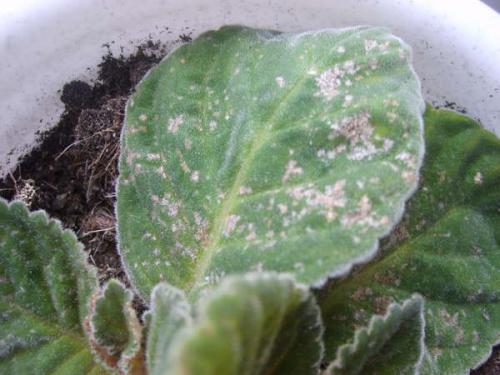
Possible difficulties
Quite often, flower growers are faced with the problems of growing gloxinia. Here are a few options for difficulties and their solutions:
- If suddenly your plant began to stretch, then a lack of light or an excessive amount of nitrogen fertilizer affects.
- If synningia began to grow more slowly and the flowers began to curl, then the problem is in a draft, cold wintering, plentiful watering or lowered air temperature.
- Leaves turn yellow - excessive watering or lack of nitrogen fertilizing.
- If the gloxinia is watered with too hard water, this can cause leaf chlorosis.
- Direct sunlight negatively affects the foliage, leaving burns on it.
- Curling leaves indicates that the room is dry and hot.
- If the flower lacks phosphorus, then the leaves become red.
- The lack of flowering may be associated with an excess of nitrogen fertilizing.

If you will properly care for your Brazilian beauty, then she will delight the eye with a bright and rich bouquet.




 10 beautiful annuals that bloom all summer
10 beautiful annuals that bloom all summer Sow in the ground, without seedlings: 10 beautiful and unpretentious flowers
Sow in the ground, without seedlings: 10 beautiful and unpretentious flowers Platicodon planting and outdoor care
Platicodon planting and outdoor care Hosta - planting and care in the open ground in the Urals
Hosta - planting and care in the open ground in the Urals